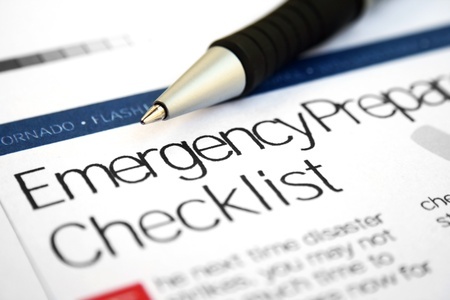

Top 5 School Security and Emergency Preparedness Strategies
When parents send their children to school, they are trusting that the school has adequate security and emergency preparedness to keep their child safe in the event of a fire, natural disaster or an unthinkable school shooting. Parents often seek information and improvements about school security procedures and emergency preparedness from school boards and superintendents. These school leaders should be prepared to communicate their school safety plans but more importantly, to ensure that their plans and strategies for dealing with an emergency are in line with current best practices.
Top 5 school security and emergency preparedness strategies
- Training
School administrators, teachers, and support staff including school resource and security officers, secretaries, custodians, bus drivers, cafeteria workers, etc. should all be trained on school threat assessment, school violence prevention, school crime prevention practices, school security procedures and awareness and the school’s emergency plans in these situations. Drills and emergency awareness training for the student body is the best way to reduce panic and encourage a positive outcome in the event of an emergency. The best way for a school to effectively handle an emergency is with a well trained and aware school staff and student body.
- Comprehensive school security plans
While security equipment like metal detectors, surveillance cameras and police and security officers can play a role in increasing school safety and reducing safety concerns; other measures are also necessary to help keep students and faculty safe. A comprehensive school safety program should include measures such as keeping trees and shrubs trimmed to ensure visibility from school windows, keeping extra doors locked, a school threat assessment team and a functional communication system that encourages reporting of school crimes and accidents. The plan should also include protocol for how to help the school population after an emergency has occurred such as providing mental health services.
- Updated and active school emergency preparedness plans
Many school districts created emergency/crisis plans after the deadly school shooting incident at Columbine High School in 1999. In truth, many of these plans are sitting on a shelf collecting dust. To be effective, these plans must be reviewed and practiced every year through drills and tabletop exercises by staff and the student body of each school in cooperation with local public safety partners such as police, fire fighters and parents. Emergency plans should also be reviewed annually by emergency management experts and public safety partners to assess and remove questionable or outdated instructions.
- Strengthen partnerships with public safety officials
Public safety officials should be involved in creating, implementing and training for school emergency preparedness plans and threat assessment protocols. Safety officials should also continue to meet with school administrators and crisis team members at least twice a year to go over, practice and update the emergency plan as necessary. To make it easier for first responders to identify specific entrances/exits when called to respond to an emergency; schools should number each entrance/exit. Local police and fire departments should also be provided with updated floor plans and blueprints to make more effective tactical responses. Schools should make their schools and school buses available after-hours and/or on weekends so SWAT teams can practice responding to active shooter and other emergency situations.
- Enhance crisis communications plans and social media strategies
School districts should start by conducting an assessment of the existing crisis communication plan. If there isn’t one, create one. The crisis communication plan should include social media such as Facebook and Twitter. Encourage parents to sign up for school social media platforms at the beginning of each school year so that there will be an easy way to quickly communicate updates to parents in the event of a school emergency.
If you or a loved one is dealing with an accident or injury, you have enough on your plate. Let an experienced accident attorney fight for the justice and compensation that you deserve. It is not uncommon to receive a settlement from the insurance company that is five to ten times bigger with the help of a lawyer. Call the caring accident attorneys at Tario & Associates, P.S. in Bellingham, WA today for a FREE consultation! We have been representing residents of Whatcom County, Skagit County, Island County and Snohomish County since 1979. You will pay nothing up front and no attorney fees at all unless we recover damages for you!




